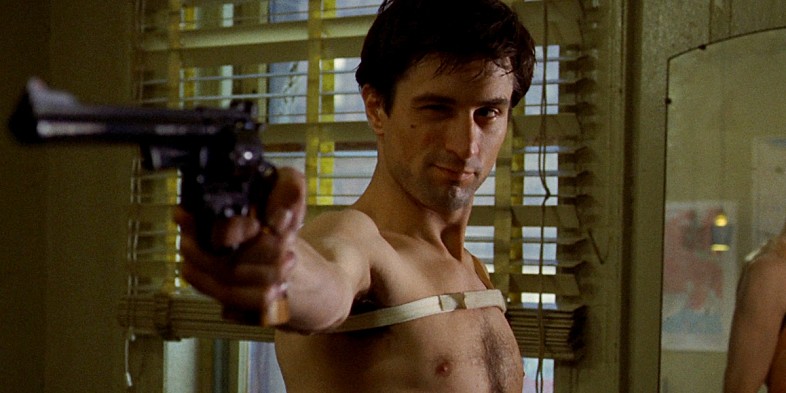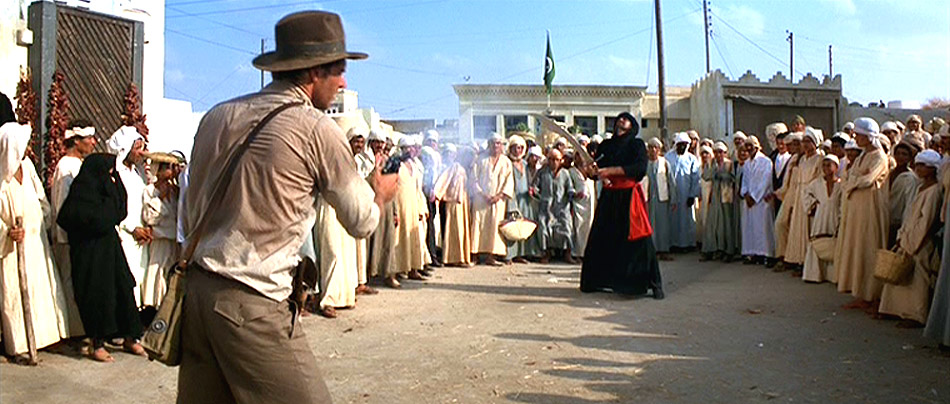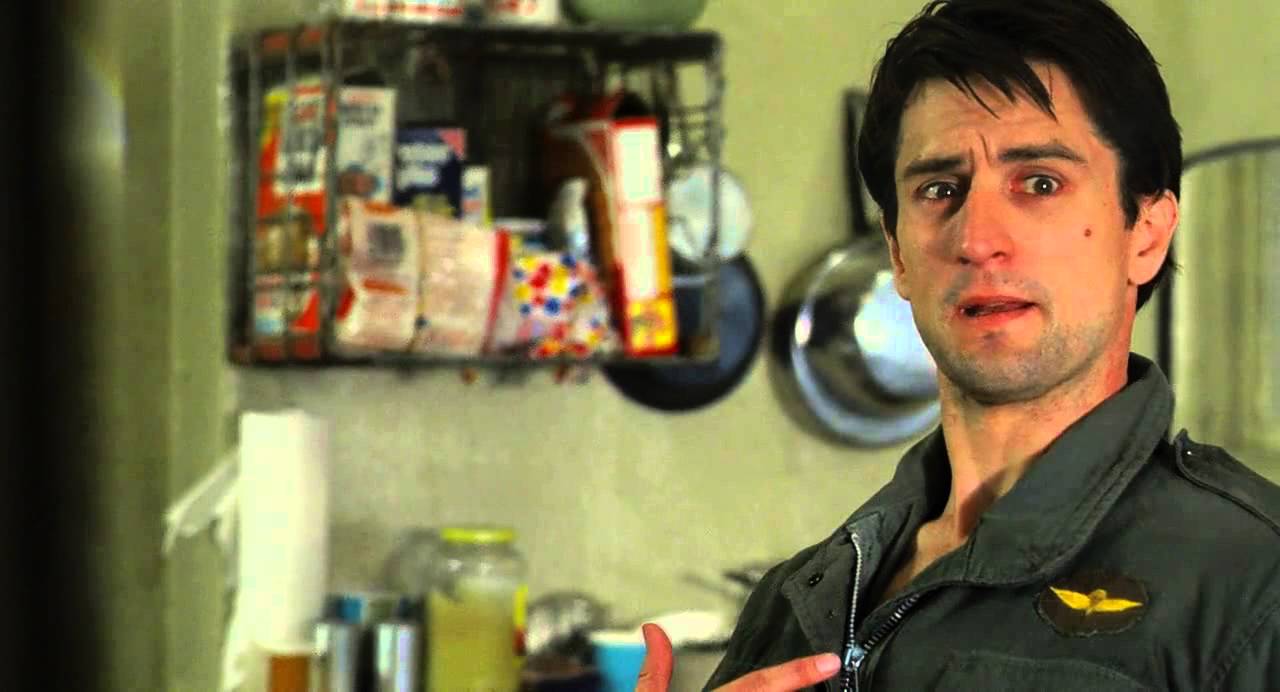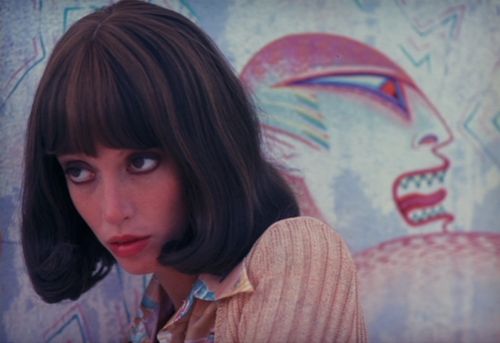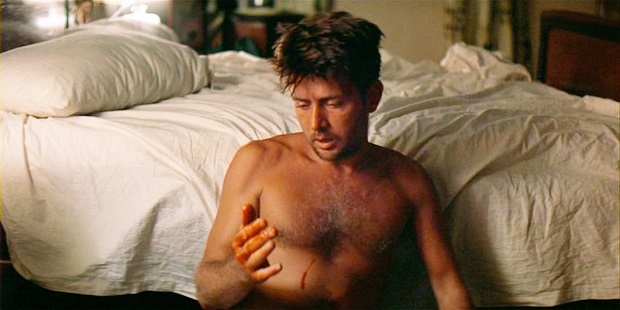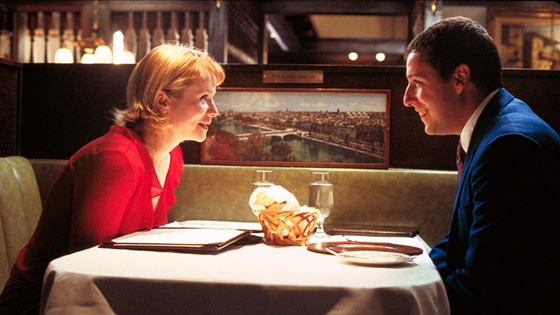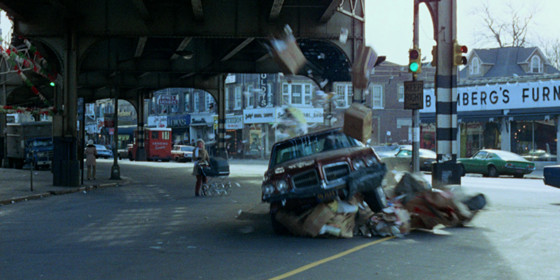Putting a film together is a symphony involving a great many people, and a hell of a lot of planning. But there are times when that planning could learn a trick or two from spontaneous moments that take place during a film’s production. Sometimes things are rethought on the day, and occasionally random events occur as the camera is turning over.
Sure, the majority of these call for the scene to be reshot, but sometimes magic happens and works its way into the final film, and the accident is retained in the final cut. What this article is looking at is 15 times the unplanned event not only crept into the final film, but gave it something more than the makers had originally planned. As the fox in Antichrist would say, Chaos reigns.
1. Raiders of the Lost Ark (1981, Steven Spielberg)
Let’s begin with one of the most common types of spontaneity: reimagining a scene on the day. Raiders of the Lost Ark features a well-known example of this in the sequence where Indiana Jones was called on to have an extended swordfight with a minor villain.
Despite the fact that there are a number of similar one-on-one set pieces in the film (the bar fight in the opening act, the extended fight with the shirtless Nazi, etc), the reason this was changed was allegedly Harrison Ford being unable to perform the stunt moves due to a stomach condition. Instead the scene was reworked to play out with a brief display of blade acrobatics from the villain, only for Jones to pull out a revolver and shoot him.
The scene never fails to get a laugh, and has become one of the iconic moments in the Indiana Jones franchise. And this isn’t Robert Altman we’re looking at here, this is Spielberg. Now although you might not think of Spielberg as someone who would welcome the unknown, his early cinema is a testament to this kind of flexible adaptability, and goes to show that you can have all the money and test screenings in the world, but this doesn’t create timeless cinematic moments.
2. Taxi Driver (1975, Martin Scorsese)
Most often when we talk about something unplanned happening in front of the camera we’re talking about dialogue. The camera turns over, and the actors say something that wasn’t in the script. The screenwriter for this film, Paul Schrader, has a lot to say about dialogue, including the idea that a script should contain a small number of good lines, a smaller number of great lines, and an even smaller number of unforgettable lines. That kind of talk is all good and well, however, if you ask any number of people to quote you a line from Taxi Driver it’s likely that they’re all going to say the same 4 lines: “You talking to me?”
The script for this sequence simply read ‘Travis talks to himself in the mirror’ giving De Niro time in the rehearsal stage to put together his own fragmentary monologue. Now, this isn’t the kind of improvisation where nothing is in place at the point that the camera turns over. This is the product of an extensive series of improvisations in rehearsal. We know full well that De Niro had a series of breakfast rehearsals with Jodie Foster, rehearsals where he went for days on end saying nothing at all.
De Niro’s not interested in making things up in front of the camera, he’s looking to create a character and generate mood. And sure, there is a structure involved here, but it’s taking the film away from the original plan, and allowing for that magic that comes in when other members of the cast and crew are given the space to bring their own strengths to a project. And really, if you want to become a great filmmaker you need to recognize and inculcate the talents of everyone around you. And there’s one name here that stands head and shoulders above the rest in this regard: Robert Altman.
3. 3 Women (1977)
Robert Altman is one of the principal figures in a kind of ‘chaos filmmaking’ school: bringing together a wide array of creatives and performers, and giving them the space to go wild; leaving the technical crew with a roving camera, zoom lens, and a myriad of microphones enabling Altman to pick a path through the mayhem. One of the smaller, yet undeniably exciting, examples of this comes in his dream-like 3 Women, shot largely in sequence.
This shooting schedule allowed for Shelley Duvall’s character to get into a car in an early scene, catch her dress in the door as she closed it, and drive away. One crew member called for the scene to be reshot, but instead Altman insisted on Duvall’s character performing the same action every time she got into a car for the rest of the film.
Why is this so exciting? Because here we have random events contributing towards the formation of who a character is: Duvall rarely stops talking during her scenes, she’s a jabbermouth, but also inobservant, a point made visually clear in how she catches her dress in her car door every time she drives anywhere. This character element was completely unplanned, and no matter how minor it may seem, this is a big moment for the unplanned in cinema, something to be cherished.
4. Apocalypse Now (1979, Francis Ford Coppola)
Of course, you can always force the unplanned. Apocalypse Now starts by pointing the camera at its lead character in the middle of a binge. And Martin Sheen is not drinking cold tea or apple juice here. Instead, we’re looking at a man who is genuinely blind drunk, culminating in Sheen’s famous mirror punch, which cut his hand. And we subsequently get to watch a drunken, bloodied figure go through an uncontrollably jagged crying fit.
Apocalypse Now is one of those rare big budget movies where a great deal of the unplanned and the chaotic was invited into the frame, but this sequence here is a particular longshot. There’s an onus on Sheen to make this scene worth watching all by himself, with none of the pyrotechnics or grandiosity present in other scenes of the film: it’s simply a man in a hotel room.
Sure, Brando improvised that final rambling monologue, but Sheen doesn’t even have words here. He’s got to hold your attention without speaking, and with no one to bounce off, and that is not an easy task. It’s worth remembering here that George Lucas based (in part) his Han Solo character on Coppola’s maverick outsider status. Would Han Solo have made a film so recklessly? You know he would.
5. The Last Temptation of Christ (1988, Martin Scorsese)
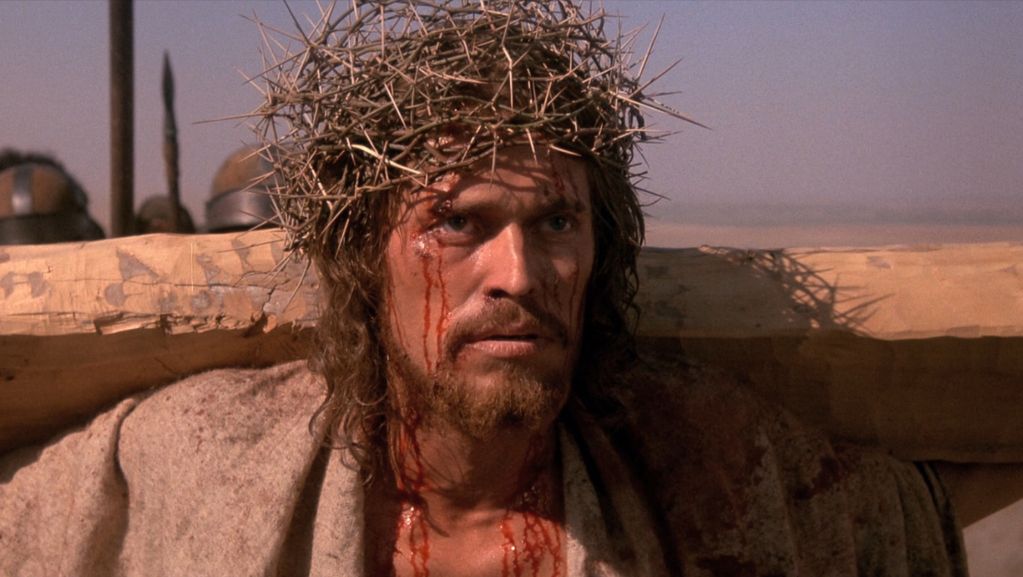
Sometimes the unplanned can enter a film from the least expected source. After the budget was slashed in half, the entire shoot of The Last Temptation of Christ became a maelstrom of dealing with the unplanned, and improvising scenes around locations. However, during the film’s high drama climax creating Jesus as a figure who re-finds his divinity, something happened that no one was expecting: Stories vary as to exactly what the cause is: it’s either down to a reel of film running out, or to a faulty camera that allowed light in, but either way the final product is what matters.
At the moment of Christ’s death and salvation the image begins to burn out, and a brief series of flashing colors run across the screen, before turning to white. I know that the odds of winning the lottery are something ridiculous, but the chances of something like this happening seem to be infinitesimal. No one knew about this until the film was finally developed, and what a tremble that must have created.
6. Punch-Drunk Love (2002, P.T. Anderson)
Anderson often talks about the influence that the aforementioned Altman had on him, and a strong example of this is how this film includes spontaneity both before the script is finished, as well as during shooting, and even after. Here’s the first: At a party scene, Sandler’s character is asked how things are going, he answers ‘Pretty food.’ And the scene then moves into why he said ‘food’ instead of ‘good’; maybe he’s hungry.
In truth, this isn’t a malapropism on behalf of the character, but of the Screenwriter. Anderson wrote the word ‘food’ by mistake, but instead of simply backspacing and correcting himself, he decided to leave it in there, and alter the scene itself (A quick shout out to Neil Gaiman misspelling the name ‘Caroline’ to find the lead character of his novel ‘Coraline’).
Unplanned occurrences happen from a wide variety of sources, but there’s something particularly exciting about a film’s characters riffing on a mistake from their creator: a diegetic reference to something (or someone) decidedly non-diegetic. If that wasn’t enough, there’s also an extended long take with Sandler on the phone to a sex worker; as he sits down at one point there’s a violent shake, this was the camera operator colliding with a table.
There’s no cut call, just like Altman, Anderson keeps the scene going. And when in the editing stage and looking at other takes of this scene that don’t feature this collision, Anderson chooses to keep this one in. That’s the unplanned bleeding into the pre-production and post-production stages. Something that does not happen nearly enough.
7. The French Connection (1971, William Friedkin)
Anderson is harking back to New American cinema: a time when things were much more flexible, and filmmakers were enjoying working with small cameras, and being away from the control of a soundstage. A scant 10 years earlier a French filmmaker had shaken cinema up considerably by running around Paris, keeping his camera aimed tight at a French actor and an American actress, and that dynamism that Godard reintroduced to film is a palpable part of New American cinema.
The French Connection is a key text here, not only because it showed that this kind of filmmaking could result in profits and awards, but also because it features one of those car sequences that you just don’t see any more, and, for the sake of health and safety, that’s possibly a good thing.
Although the route they took for the ‘car chases an elevated train’ scene was planned, it was kept very loose, and the streets were not controlled with the strictness you’d find today. Resulting in a member of the public driving into a shot, and straight into Popeye Doyle’s car. It’s a flash of a moment in the film, but it throws your heart into your throat, and it’s unplanned stuff like this that adds a patina to a film that just isn’t there without it.
